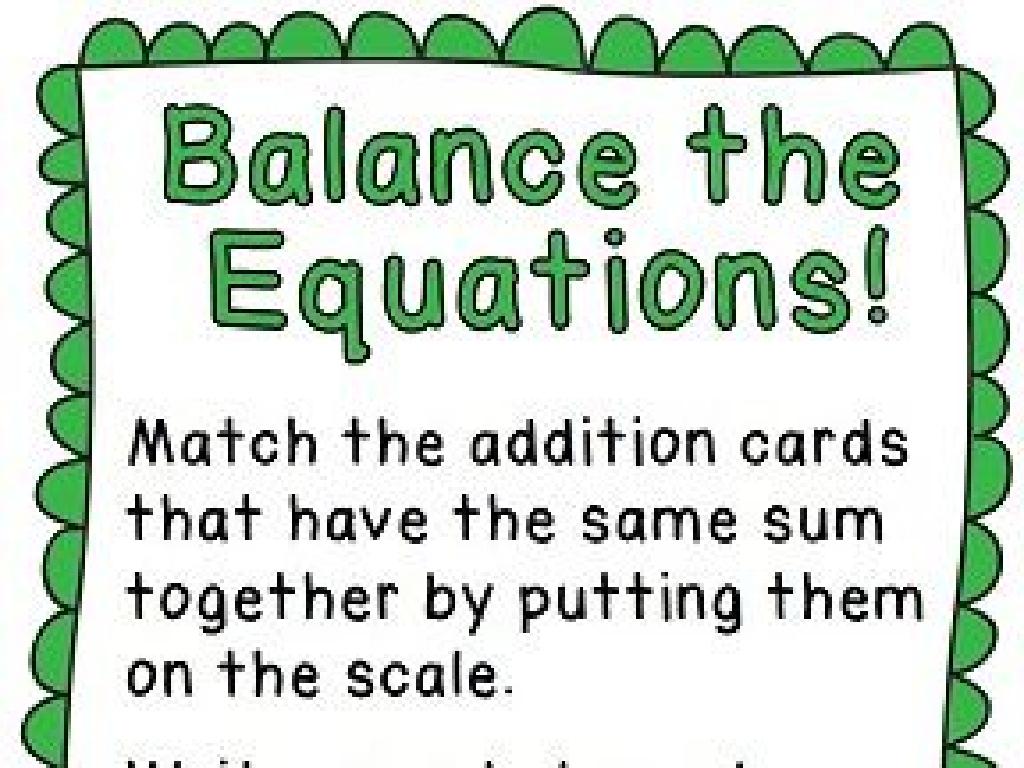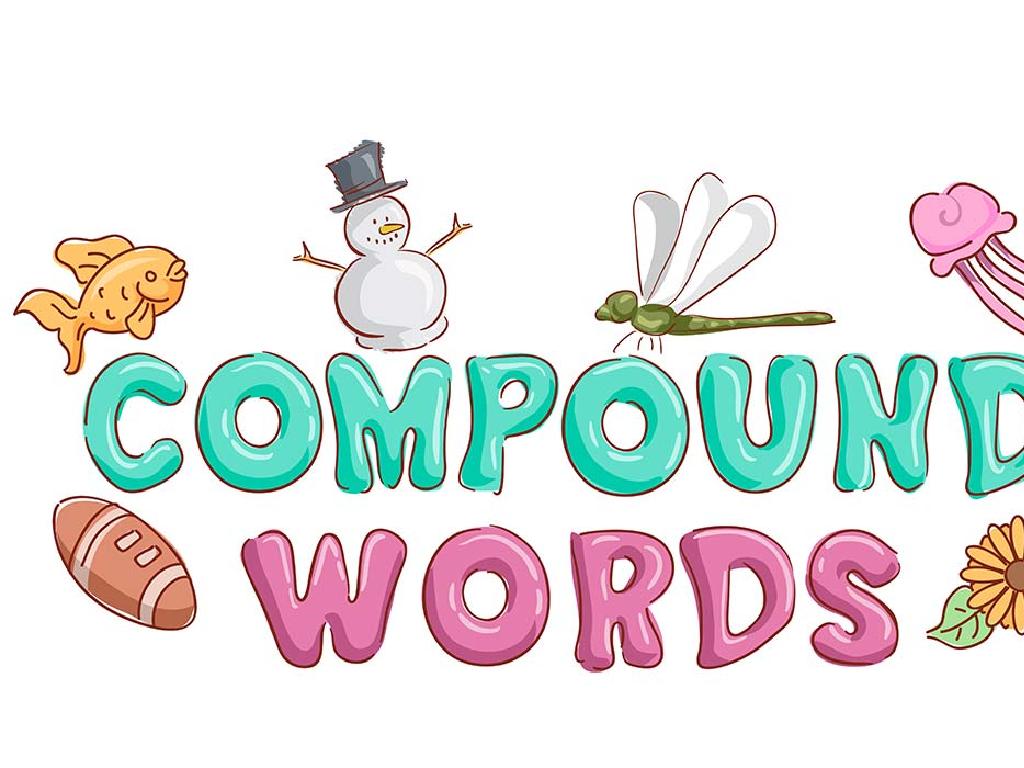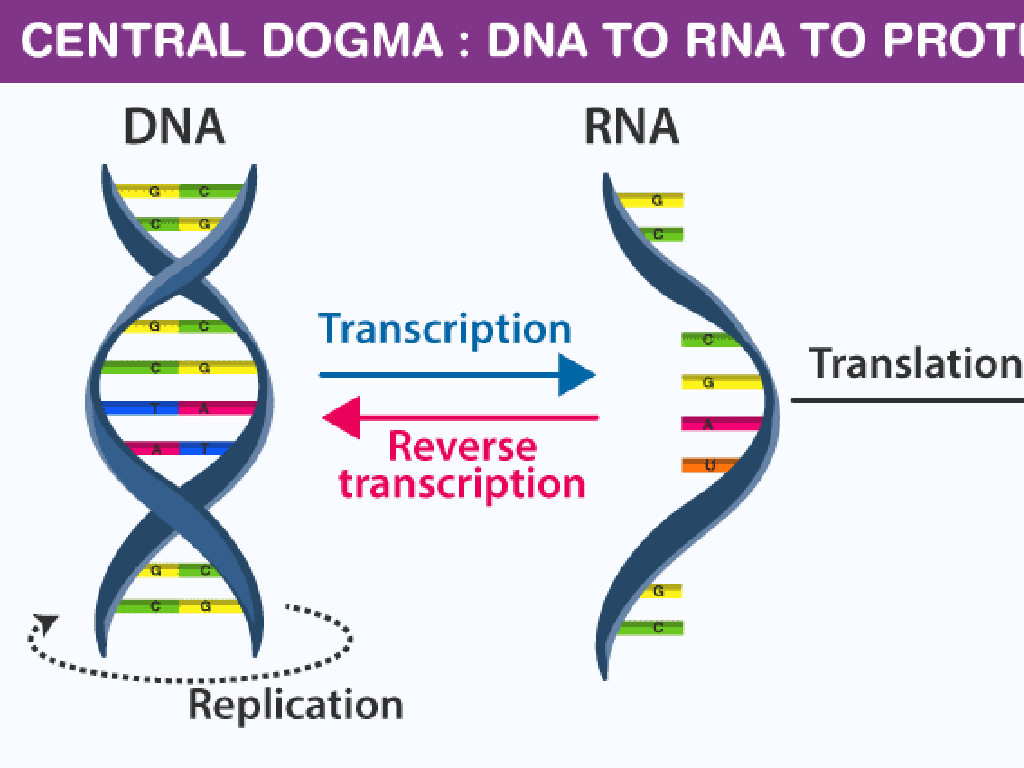Long And Short
Subject: Science
Grade: Kindergarten
Topic: Comparing
Please LOG IN to download the presentation. Access is available to registered users only.
View More Content
Comparing Sizes: Long and Short
– Learn about long and short
– Comparing different sizes
– What’s longer or shorter? Let’s find out!
– Fun game to practice
– We’ll play a game to see who can find the longest stick!
– Show and tell with objects
– Bring your favorite toy and we’ll see who’s is longer!
|
This slide introduces the concept of comparing sizes, specifically focusing on the attributes ‘long’ and ‘short.’ Start by explaining that some things are longer and some things are shorter, and we can compare them to tell which is which. Use classroom objects for direct comparison. The fun game could involve children finding objects in the classroom or playground to compare lengths. For show and tell, encourage children to bring an object from home and discuss if it’s long or short compared to other objects. This activity will help reinforce the concept of length and the use of descriptive language in a tangible and engaging way.
Exploring Length: Long and Short
– Understanding ‘Long’
– When an object stretches out far.
– Examples of long objects
– A snake slithers on the ground, a train on tracks, a pencil for drawing.
– Comparing lengths
– Look around to find things longer or shorter than your arm.
– Long vs Short
– Long things take up more space than short things.
|
This slide introduces the concept of ‘long’ to Kindergarten students by defining it and providing relatable examples. Emphasize that ‘long’ refers to how far something can stretch out. Show them pictures or actual objects like a toy snake, a toy train, and a pencil to illustrate the point. Encourage the students to compare these objects with each other and with items in the classroom to understand the difference between long and short. This will help them grasp the concept of length in a tangible way. During the lesson, engage the students in activities where they can practice identifying and comparing the lengths of various objects.
Understanding Long and Short
– What does ‘short’ mean?
– Short: doesn’t stretch far
– Examples of short objects
– A cup, a mouse, a book
– Comparing lengths
– Use objects to show difference
– Short vs. Long
– Short is smaller than long
|
This slide introduces the concept of ‘short’ to Kindergarten students. Begin by explaining that ‘short’ describes the length of an object that does not stretch out very far. Show them examples of short objects like a cup, a mouse, and a book, which they can easily relate to. Engage the students by comparing these items with longer objects they are familiar with, such as a broom or a car. This will help them understand the difference between short and long. Encourage the children to participate by bringing objects from home to compare lengths and reinforce the concept.
Comparing Long and Short
– Learn to compare object lengths
– Understand ‘long’ and ‘short’ terms
– ‘Long’ means more length, ‘short’ means less
– Look at pictures to compare
– We’ll use images to see length differences
– Practice saying ‘long’ or ‘short’
– We’ll say it out loud as a group activity
|
This slide introduces the concept of comparing lengths, focusing on the terms ‘long’ and ‘short.’ Start by explaining that comparing objects helps us understand their size relative to each other. Use visual aids like pictures to show clear examples of long and short objects. Engage the students by asking them to participate in identifying whether each object is long or short. This interactive approach will help reinforce their understanding of the concept. Encourage them to use their hands or other objects to ‘measure’ and compare lengths in a fun, practical way. The goal is for students to be able to visually assess and articulate the difference between long and short objects.
Let’s Practice Comparing Lengths!
– It’s your turn to practice
– Observe classroom objects
– Look at pencils, markers, books, and more
– Decide if they are long or short
– Use your hands or paper strips to measure
– Share your answers with the class
|
This slide is for a hands-on activity where students will apply their understanding of long and short by observing and comparing objects in their classroom. Encourage them to use non-standard units like paper strips or their own hands to measure and compare lengths. This will help them develop a practical sense of measurement and comparison. After they decide whether each object is long or short, ask them to explain their reasoning to the class, which will reinforce their understanding and communication skills. Possible objects for comparison include pencils, markers, books, toys, pieces of string, and blocks. Ensure that the activity is interactive and fun, and provide guidance as needed.
Class Activity: Long and Short Hunt
– Let’s explore long and short objects
– Find a long object in the classroom
– Look for the longest thing you can find
– Find a short object in the classroom
– Look for the shortest thing you can find
– Discuss why they are long or short
– Think about length and explain your choice
|
This activity is designed to help Kindergarten students understand the concept of length by comparing objects. Encourage the children to walk around the classroom and pick one object they consider long and another they consider short. They should then be prepared to explain why they chose those objects, which will help them articulate their understanding of the concepts of long and short. For the teacher: Prepare a list of potential objects the students might choose from and be ready to guide them in their choices if they are struggling. Possible activities could include comparing pencils to markers, strings of different lengths, or even their own steps. Ensure that each child gets a turn to share their findings with the class.
Great Job Exploring Long and Short!
– Congratulations on learning
– You’ve learned to measure and compare lengths!
– Now compare sizes around you
– Use your new skills to find long and short objects
– Practice makes perfect
– Keep practicing to get even better
|
This slide wraps up the lesson on comparing lengths by congratulating the students on their new understanding of long and short. Encourage them to apply this knowledge by observing and comparing the size of various objects in their environment. Emphasize the importance of practice in mastering these concepts. As a follow-up activity, you could ask students to bring examples of long and short items from home or draw pictures of things they consider long or short. This will help reinforce their learning and make the concept more tangible.






